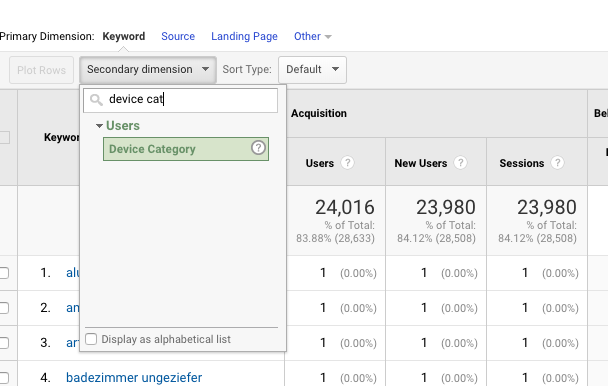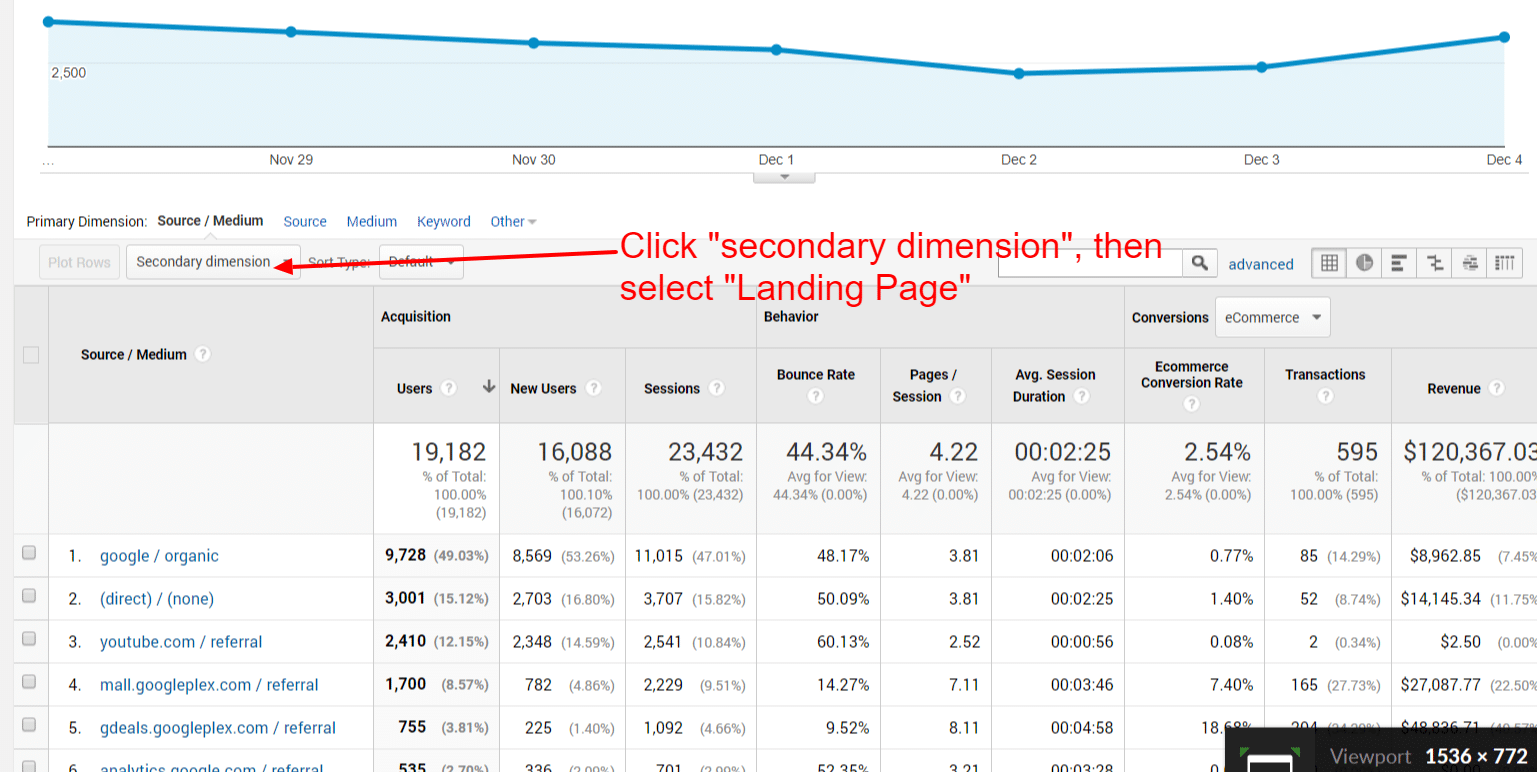The Value of Secondary Dimension in Google Analytics for Your search engine optimization
The Value of Secondary Dimension in Google Analytics for Your search engine optimization
Blog Article
Enhance Your Information Evaluation Making Use Of Second Measurement in Google Analytics
Discovering the capabilities of second dimensions in Google Analytics opens up a realm of possibilities for refining data analysis. By layering added dimensions onto primary information collections, a more intricate story emerges, dropping light on user communications and performance indications.
Comprehending Secondary Measurements
In the realm of information analysis, a critical facet to grasp is the principle of additional measurements and their relevance in extracting deeper insights from Google Analytics records. Additional measurements in Google Analytics refer to extra specifications that can be included in the primary dimension, permitting a more in-depth evaluation of data. By incorporating secondary dimensions, analysts can sector and filter information to uncover patterns, patterns, and correlations that may not be obvious when considering the information all at once. These secondary dimensions can supply context and an extra thorough understanding of individual habits, website traffic sources, and other essential metrics tracked by Google Analytics.

Advantages of Utilizing Additional Dimensions
When evaluating data in Google Analytics, the utilization of additional measurements offers vital insights into customer actions and efficiency metrics. By adding an additional measurement to your primary information, you can delve deeper into the characteristics of your web site site visitors and their interactions.
Furthermore, additional measurements enhance the context of your key information, giving an extra extensive view of customer involvement and efficiency metrics. On the whole, the usage of additional dimensions in Google Analytics can considerably enhance the depth and top quality of your data analysis, leading to more educated decision-making and improved results.
Exactly How to Add Second Dimensions
By integrating additional dimensions in Google Analytics, users can obtain much deeper insights into their information analysis procedure, enabling more thorough analysis of user behavior and efficiency metrics. Adding second measurements is an uncomplicated process that can substantially improve the deepness of analysis. To include an additional measurement in Google Analytics, begin by navigating to the record you want to analyze. As soon as in the report, situate the "Additional dimension" tab over the information table. Click on it to expose a dropdown menu with numerous options such as Actions, Innovation, and Custom Capacities. Select the measurement you want to add, such as 'Source/Medium' or 'Device Classification'. This secondary measurement will then be related to your existing information, offering added context and enabling a more thorough analysis of individual interactions. By using second dimensions effectively, customers can uncover important understandings that might have otherwise been ignored, leading to informed decision-making and improved efficiency strategies.
Studying Information With Second Measurements
Utilizing secondary dimensions in data analysis offers a much more detailed understanding of individual actions and efficiency metrics. By including an additional measurement to your main information established in Google Analytics, you can dig much deeper right into the features of your internet my link site site visitors and their communications. Incorporating the key measurement of 'source/medium' with the additional measurement of 'touchdown web page' can disclose which particular pages are bring in traffic from different resources, assisting you optimize these pages for much better engagement.

Basically, evaluating information with second dimensions encourages you to acquire valuable understandings into customer habits, determine trends, and make informed decisions to improve the performance of your digital residential or commercial properties.
Finest Practices for Second Measurements
In data evaluation, integrating second measurements effectively can significantly improve the deepness of insights derived from metrics and individual actions patterns. When using second dimensions in Google Analytics or any kind of other logical device, it is vital to comply with ideal practices to make sure the accuracy and find out here importance of the data analysis.
One secret finest practice is to meticulously select additional dimensions that match the primary measurement being assessed. Selecting second dimensions that supply added context or further division can supply a more thorough understanding of the data. It is additionally important to prevent overcomplicating the evaluation by consisting of also numerous additional measurements, which might bring about confusion or dilution of insights.
Moreover, it is suggested to experiment with different mixes of secondary and key dimensions to uncover new relationships and fads. On a regular basis reviewing and refining the selection of additional dimensions based on the particular objectives of the evaluation can cause even more actionable understandings. By adhering to these finest techniques, information experts can leverage additional measurements properly to improve the general information analysis process and decision-making capabilities.

Final Thought
Finally, including secondary dimensions in Google Analytics is important for a detailed data analysis technique. By leveraging additional dimensions alongside main ones, online marketers and analysts can reveal valuable insights and relationships that can educate view it now decision-making and maximize digital advertising and marketing strategies. Recognizing just how to properly make use of additional dimensions and complying with finest practices will enable professionals to extract purposeful data and boost their total performance metrics.
Secondary measurements in Google Analytics refer to extra parameters that can be included to the main dimension, permitting for a more comprehensive evaluation of information. By incorporating second dimensions, analysts can sector and filter data to uncover patterns, patterns, and correlations that might not be evident when looking at the data as a whole. Incorporating the main dimension of 'source/medium' with the second dimension of 'touchdown page' can disclose which certain pages are bring in traffic from various resources, assisting you optimize these web pages for much better engagement.
One key finest practice is to carefully pick secondary measurements that complement the main measurement being evaluated. By complying with these best methods, information analysts can leverage secondary dimensions properly to enhance the general data analysis process and decision-making capacities.
Report this page